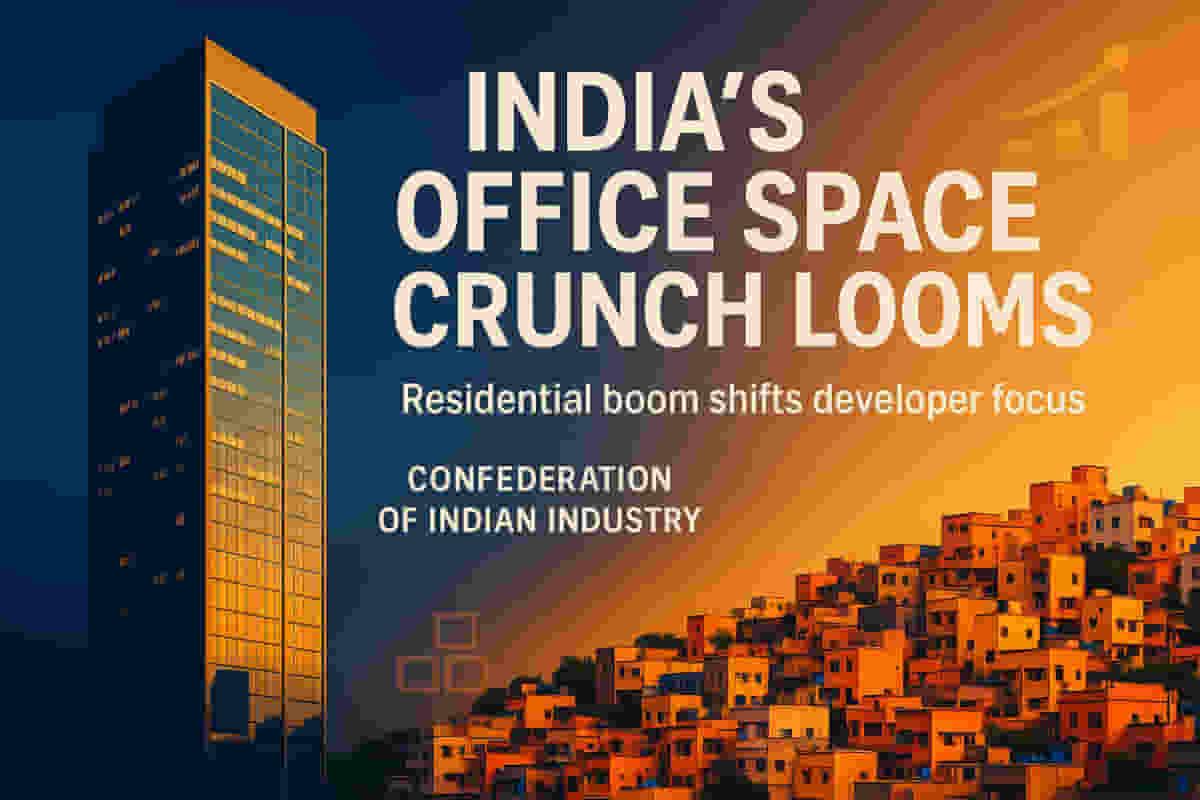Indian Developers Shift Focus to Residential Projects, Potentially Causing Office Space Shortage
Real Estate
|
31st October 2025, 1:06 PM

▶
Short Description :
Detailed Coverage :
The Indian real estate market is experiencing a significant shift in developer focus, with residential projects becoming increasingly attractive compared to commercial developments, according to a report by the Confederation of Indian Industry (CII) and property consultant Knight Frank. Residential capital values per square foot are reportedly 2-3 times higher than those of comparable commercial projects. This valuation disparity, coupled with faster cash flows and simpler regulatory approvals in the residential sector, is compelling developers to reallocate capital. This strategic pivot is leading to an acute undersupply in India’s office real estate market, which is now more driven by project economics than post-COVID caution.
Impact This trend is likely to result in rental appreciation and valuation uplift for existing commercial properties. Developers concentrating on residential projects may see higher returns, but the broader economy relies on a strong commercial sector. The report suggests that to meet future demand and achieve the target of 2 billion sq ft of office stock, India needs to accelerate new supply creation and enhance the productivity of existing assets. Approximately 31% of current office inventory is suitable for retrofitting, offering a chance to modernize older buildings. The supply-to-demand ratio for office space has fallen sharply from 1.40 in 2008 to 0.49 in the first nine months of 2025, indicating a persistent shortfall. This imbalance is most severe in core business districts, where Grade A vacancy levels are in single digits. Rating: 7/10
Difficult terms: Residential real estate: Homes, apartments, and villas that people purchase or rent to live in. Commercial development: The construction and development of properties used for business purposes, such as offices, retail spaces, and shopping centers. Capital values: The market price or worth of a property. Micro-markets: Specific, localized areas within a larger city that share similar real estate characteristics and market trends. Valuation disparity: A significant difference in the estimated worth or price between two comparable assets; here, between residential and commercial property prices per square foot. Profit per sq ft: The profit generated from selling one square foot of built space. Cash flows: The movement of money into and out of a business. Faster cash flows mean quicker returns. Regulatory approvals: Official permissions required from government bodies before construction can begin or proceed. Undersupply: A situation where the available quantity of a good or service is less than the quantity demanded. Developer strategy: The planned approach a real estate company takes for building, marketing, and selling properties. Occupier demand: The need or desire of businesses and individuals to rent or buy space for their operations or living. Developer sentiment: The general attitude and confidence of property developers regarding the current and future market conditions. Rental appreciation: An increase in the amount of rent charged for a property over time. Valuation uplift: An increase in the market value of a property. Strategic recalibration: The process of adjusting business plans and strategies in response to changing market dynamics. Office stock: The total amount of office space available in a particular geographical area or market. Retrofitting: The process of updating or modifying an existing building with new technology or features, often for energy efficiency or improved functionality. Reposition: Changing the perceived use or market appeal of an existing property. Supply-to-demand ratio: A metric comparing the total available supply of a good or service to the total demand for it. A ratio below 1 indicates demand exceeds supply. Leasing activity: The process and volume of commercial spaces being rented out to tenants. Vacancy levels: The percentage of available commercial or residential space that is currently unoccupied and available for rent or sale. Grade A vacancy: The percentage of unoccupied space specifically within the highest quality, most modern, and well-located office buildings. Fragmented geographic presence: When a company operates in numerous, scattered locations rather than being concentrated in a few key regions. Core business districts: The central areas of a city that are hubs for corporate offices, financial services, and major businesses.